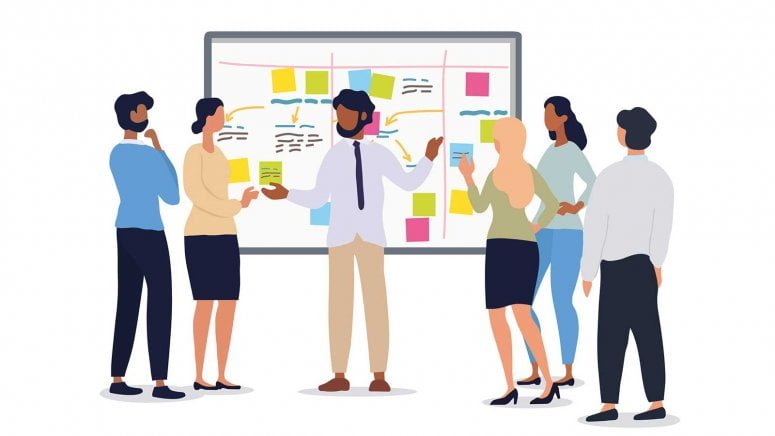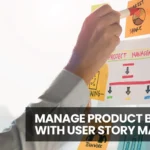When you are working with the Agile framework, leaders and team members will have an effective and efficient framework for their business models and product development. The majority of the advantage stems from how the team organizes themselves and their product roles, the specific platform of choice, and how the team makes use of the tools at their disposal.
It is important, then, to know the different product roles, their specific responsibilities, and how they can uniquely assist product development and management. Typically, there are three roles within Lean and Agile: the product manager, the product owner, and one or more business analysts.
In this article, we will dive into the details of each role and how they can use Agile User Story Map & Product Roadmap for Jira or Agile User Story Mapping for Confluence tools to execute their responsibilities flawlessly.
Table of Contents
What is a Product Manager?
Typically, the Product Manager is the most senior role; this is true in most situations, although if it is a particularly large Agile project, then there might be a Chief Product Officer or Owner. The Product Manager holds the vision for the entire project, from the conception of the product to the finishing touches on the final consumer product. Since this is the case, the most significant or overall Product Management tasks will be in their hands, including planning, organizing, and leading development and management teams that can create and deliver successful products with superior value.
As the Product Manager must think and plan strategically for product development purposes, one of the most effective tools for them is the Product Roadmap. A Roadmap is a visual tool that the manager, owner, analysts, and development team will use in order to perceive a clear goal and take the appropriate steps to reach the goal. An excellent Roadmap will contain various elements including goals, features, user story mapping, and timelines.
Likewise, a meaningful road map will take into account customers from the very beginning, utilizing user story mapping to develop a product that appeals to customer needs and desires. Within Agile User Story Map & Product Roadmap, Product Managers will have the unique opportunity to access 3-level mapping, integrating goals, steps, and stories together with customer personas.
Furthermore, developing a skeleton as the core of the roadmap will set the project up for success. Product Managers must be able to set up a clear overall objective, smaller micro goals, and the steps required to get to each goal. Moreover, the Product Manager should work on Feature Prioritization, which is planning and prioritizing the most important features, or functions of the product, the development team will work on based on the Product Roadmap. However, this part may be more suited towards the Product Owner in some teams, as they can deal with more specific prioritization.
What is a Product Owner?
A Product Owner is at the heart of any Agile team; they handle ensuring that the overall vision from the Product Manager has been translated into smaller, attainable bites for the development team. In other words, they make sure that the project vision, objectives, values, and steps are all incredibly clear. They will also verify that teams have done appropriate work in their sprints and that the work will satisfy the long-term objective of the project.
That said, the Product Owner is the most flexible position. While these are their main or core responsibilities, they will need to adjust to suit the needs of the specific business, project, and team and their tasks may change accordingly.
For these activities and tasks to be satisfied, the Product Owner needs to have a wide array of accessible and flexible tools. Along with their own unique expertise, they will find immense assistance from Story Mapping and the Team Backlog in clearly defining goals, and steps, and prioritizing tasks in accordance with the Product Manager’s work.
With Agile User Story Map & Product Roadmap, Product Owners will be able to prioritize customer needs and user stories, set up tasks in accordance with the steps to reach the objectives, divide tasks up amongst specific user stories, arrange and prioritize tasks, and manage the Backlog for the development team. Moreover, they will be able to approach the design and organization with collaboration, by reassessing after sprints and working with the whole team to develop clearer, stronger, or more valuable mini-goals and tasks.
What is a Business Analyst?
A Business Analyst is a Jack of all Trades; they have the general knowledge skill, and enough expertise, to take on any one of the roles from the Product Manager or Product Owner. However, their main responsibility is to design and clearly detail the customer and their needs, desires, and challenges such that it translates to all other areas of the development and management schema. In this way, they are responsible for ensuring that the user stories are understood, that they relate to the objectives, that the tasks will satisfy user stories, and that the Backlog is prioritized in such a way that they maintain user stories’ integrity.
Furthermore, when a sprint is completed, they will ensure that it maintains the overall vision and objective of the project and advise on releasing or adjusting.
With this intention in mind, Story Mapping will be the main priority for a Business Analyst. When utilizing an Agile User Story Map & Product Roadmap, the Business Analyst can easily maneuver, adapt, and change custom boards to fit the current needs of the team. They can also edit, rewrite, or add to the Story Maps that were created by the Product Owner, while further breaking down user stories for a more detailed understanding of consumer needs and product objectives.
Where can I try User Story Map & Product Roadmap?
Agile User Story Map & Product Roadmap not only allows any Agile product roles to perform their responsibilities easily and effortlessly, but it also gives them the ability to create clear, concise, and organized structures for their team. Each product role can maneuver efficiently with this app, creating elements that will guide their team effectively in developing a successful product. Try Agile User Story Map & Product Roadmap for Jira or Agile User Story Mapping for Confluence for free today!













